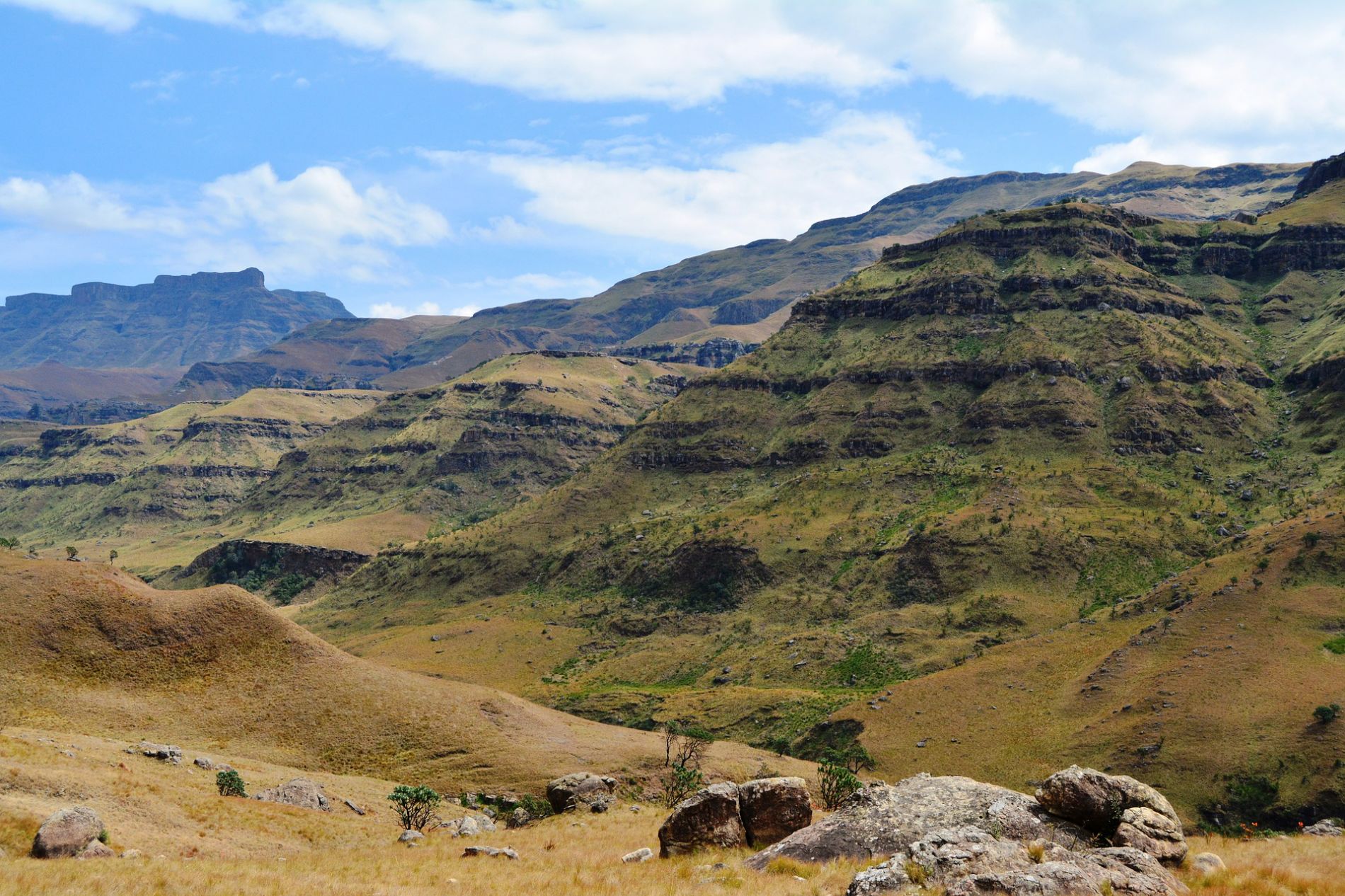Southern Africa

Introduction
Southern Africa is vulnerable to a range of complex and systematic risks. Exacerbated by the climate emergency and other underlying risk drivers such as unplanned urbanization or conflict and fragility, the frequency, magnitude and impact of disasters, especially droughts and flood events, in the regions is increasing (SADC, 2022). According to the GAR2022, Sub-Sahara Africa region has the highest share of urban population living in informal settlements and extended rainy seasons have uprooted millions of people. Additionally, the data scarcity and resulting gaps in many African countries regarding disaster impacts and loss as well as disaster-related deaths continues to impede DRM and RID decision-making.
Cooperation with SADC
In Southern Africa, GIDRM cooperates with the Southern African Development Community (SADC), the regional economic community comprising 16 member states: Angola, Botswana, Comoros, Democratic Republic of Congo, Eswatini, Lesotho, Madagascar, Malawi, Mauritius, Mozambique, Namibia, Seychelles, South Africa, United Republic Tanzania, Zambia and Zimbabwe.
GIDRM promotes an integrated, cross-sectoral, multi-actor and multi-level approach, while focusing on three main areas of intervention:
(1) enhancing the (disaster) risk management capacities to promote gender sensitive, risk-informed development into SADC sectoral policies,
(2) supporting the integration of risk-informed development into selected regional value chains and sectors through a strong collaboration with existing development cooperation projects in the SADC region, and
(3) strengthening the dissemination of knowledge and lessons learned on how to integrate risk-informed development in various key sectors.
Context: Lesotho
Water is Lesotho’s principal natural resource. It is a vital resource for a wide range of sectors and critical infrastructure services, such as energy, agriculture, and economic production (i.e., textile industry). In fact, Lesotho is considered the “water tower” of Southern Africa, meaning, that all national water-related challenges and interventions also have an immediate effect in downstream countries. At the same time, the water sector in Lesotho is exposed and vulnerable to multiple hazards and risks. Erratic weather patterns and drought, unsustainable land-use methods, increased demand due to growing population and unplanned urbanization patterns, as well as insufficient access to alternative livelihoods leads to overgrazing, erosion and desertification. This is further driven and compounded by climate change, which is expected to push Lesotho into a period of water stress by 2030.
Given the relevance of water for the environmental, social and economic pillars of development, Lesotho’s water sector criticality poses a systemic risk with severe potential consequences, these include insufficiency of water resources potentially spilling over and cascading into crisis and insecurities in various sectors such as energy, food, and economy unfolding to involuntary migration flows or social and political instabilities. Managing water infrastructure and supply from a systemic, transboundary, and risk-based perspective is thus critical for a resilient and sustained water provision.

GIDRM in Lesotho
GIDRM aims to strengthen the capacities and skills of selected decision-makers in Southern Africa by making methods for risk-informed development interventions available. In conjunction with the “Integrated Catchment Management” (ICM) project implemented in the SADC region, specifically in Lesotho, GIDRM is piloting a climate risk-assessment tool with the water sector as an entry point for RID.
Together with the Orange-Senqu River Commission (ORASECOM) and the Climate Risk Institute (CRI), GIDRM is advancing the use of the Public Infrastructure Engineering Vulnerability Committee (PIEVC) Protocol for the assessment of climate change risks associated with infrastructure assets in the water sector in Lesotho. Additional capacity building measures like technical trainings, stake-holder workshops, and the provision of various related materials, will add to the development of climate-proofing standards for the region and/or sector.
In addition, GIDRM is aiming to support the enabling environment for risk-informed development by fostering resilience in Lesotho’s water sector. Focusing on the six core dimensions of an enabling environment for RID (finance and resources; knowledge and information; culture and people; partnership and collaboration; organizational capabilities; policy and regulations), entry points for RID will be identified and capacities of various stakeholder groups will be built based on the identified needs.
Given the transboundary nature of water resources in Lesotho, GIDRM activities also strive to open avenues for Lesotho stakeholders to contribute to the regional agenda and provide good practices for ORASECOM member states and the SADC Secretariat to scale up the approach beyond and with the water sector.
More information
- Download our SADC factsheet or Lesotho factsheet in our resources.
- UN Habitat “Regional Assessment on Urban Vulnerability and Resilience in Southern African Development Community Member States”
- Visit the SADC Website.